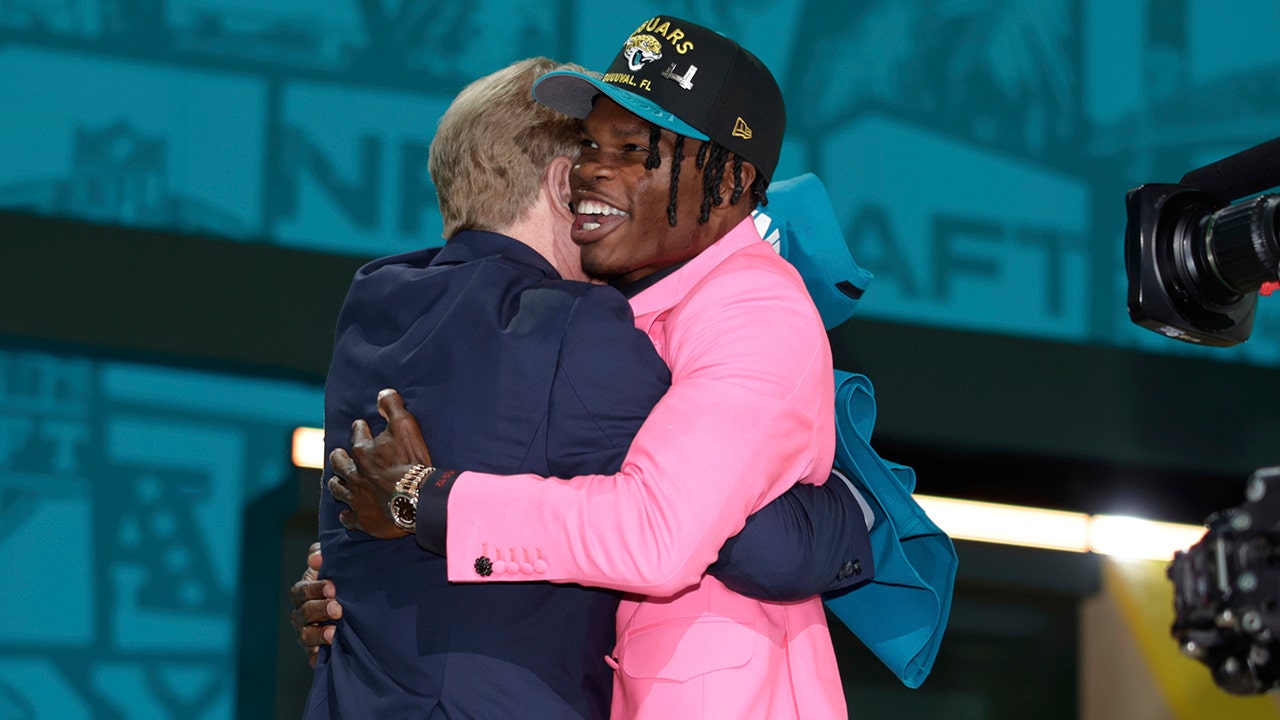“If I’m like, ‘Oh, let me go buy a new pair of jeans,’ I’m never like ‘Oh, let me go to a Levi’s store,’” Brown said. “I just think there’s always going to be cheaper denim to find.”
Denim is trendier than ever, but consumers like Brown have made it hard for Levi Strauss & Co. to capitalize on the moment. The company synonymous with blue jeans still sells plenty of clothes — last month it reported better-than-expected earnings and $1.44 billion in second-quarter revenue — but many analysts expected higher sales.
Levi Strauss’s stock price had been rising for several months before that June 26 earnings report, but shares have fallen 17 percent since then.
Levi Strauss’s financial setback stands out because trend forecasters have crowned 2024 the year of denim. The fabric’s popularity started to boom as consumers emerged from the pandemic with a desire to elevate their wardrobes from lockdown-era leggings and sweatpants. Google searches for the fabric hit a 20-year high earlier this year, and demand for denim skirts, dresses and ultrawide leg jeans has surged among young consumers.
“We assume Levi’s shouldn’t have a challenging position at all, because there are many ways in which Levi’s is synonymous with denim,” said Emma McClendon, an assistant professor of fashion studies at St. John’s University in New York. “But I would say historically, in these moments of high-fashion denim, of high-experimentation denim, of really cutting edge denim, Levi’s tends to be a follower.”
Executives for Levi Strauss argue their company remains formidable in the denim world, with the ability to stay atop fashion trends while pursuing traditional styles. They attributed the recent revenue letdown on disappointing results from Docker’s, the company’s business casual brand, and the U.S. dollar’s strength hurting overseas sales. Sales in China also lagged because of that country’s economic woes, Levi Strauss Chief Financial Officer Harmit Singh told The Washington Post.
The company has also experienced difficulties with sales through traditional channels in recent years. It historically has relied on retailers such as Macy’s and Nordstrom, but with some of those companies struggling, Levi Strauss has started to prioritize its own stores and website.
Levi’s still looks “very strong” in traditional retail channels compared to its peers, Bank of America analyst Chris Nardone said. But those retailers have issues the company can’t control.
“There’s somewhat of a challenge in the wholesale market, where there’s just certain retailers that are ordering products a little bit more cautiously,” Nardone said.
In 2022, Levi Strauss outlined plans to open 400 new stores and triple its e-commerce business as part of a massive direct-to-consumer push. That’s paying off — nearly half of the company’s sales last quarter came via its website or stores, fueling an 8 percent increase in direct-to-consumer revenue.
“Direct-to-consumer is the leading indicator of the brand’s health,” Nardone said.
Levi’s has also seen growth in its trendier styles, including triple-digit sales bumps for denim skirts and dresses last quarter. Loose fits also now make up more than 50 percent of the company’s bottoms assortment.
Singh said Levi’s could have responded faster to trends in broader denim clothing, including skirts and dresses. Capitalizing on head-to-toe denim trends became a bigger priority in 2023 when Michelle Gass took the helm as CEO, he said. Since then, those products have become a meaningful part of the Levi’s brand, he added.
Gass echoed that sentiment during the company’s second-quarter earnings call last month.
“This whole trend of baggy, loose, wide leg, that’s resonating,” Gass said on the call. “Our key customers are excited. … Our strategy around denim lifestyle, and in particular with women, we’re seeing outside growth there.”
But the company hasn’t maintained the same explosive stock growth as some of its biggest denim competitors. Shares of Abercrombie & Fitch have more than tripled in value over the past year, while American Eagle Outfitters shares are up 60 percent.
Levi’s has an “unenviable position” when denim becomes the focal point of the trend cycle, according to Joshua Williams, an expert in fashion management and merchandising who runs the New York-based fashion agency The Consult.
If Levi’s leans too much into trends, it could alienate customers who turn to it for classic, consistent denim styles. But the jeans-maker misses out on the denim boom entirely if it doesn’t pursue new styles at all, Williams said.
“It’s a tricky thing for Levi’s, because Levi’s isn’t really known as a fashion trend company,” Williams said. “They’re trying new styles, and in some cases, I think it’s working for them, but in other ways, I’m guessing that there’s some conversation internally, like, ‘Let’s really stay on course as being true to our core.’”
Levi Strauss executives argue that they can balance trendiness with tradition. “It’s well-known that the brand’s an iconic brand, and you don’t become iconic unless you lead trends,” Singh said. “It’s our responsibility to try and get a head start on trends, sometimes lead those trends.”
And though inflation has eased, shoppers remain price-sensitive. Young consumers, in particular, aren’t willing to pay $100 for new Levi’s 501 jeans when they can buy them at a thrift store or simply buy a cheaper brand, Williams said. Levi’s has always welcomed the robust resale market for its older jeans, but Gen Z’s focus on finding one-of-a-kind denim outfits at vintage shops means there is “surely some market share that could be going to new Levi’s products going to resale,” Williams said.
Elli Ward, a University of Maryland student, is one of those consumers. All of Ward’s go-to pants are Levi’s, but they would never buy new clothing directly from the company — last month, they snagged a pair of jeans from the brand for only $1 at a thrift store.
“A lot of people I spend time with and hang out with and see online are just no longer willing to spend big money on things like jeans,” said Ward, 20.
Retailers should keep those attitudes in mind, said Jennifer Bentivegna, an assistant professor of fashion business management at the Fashion Institute of Technology: “The price points have to be really sharp.”














































